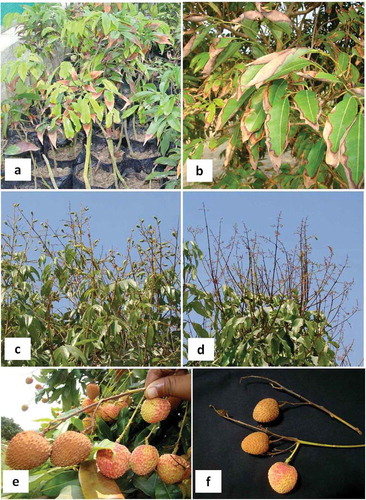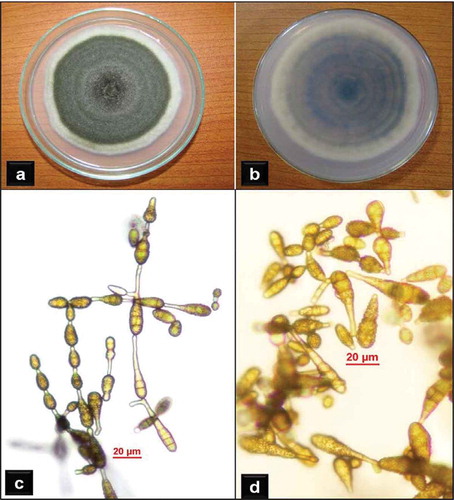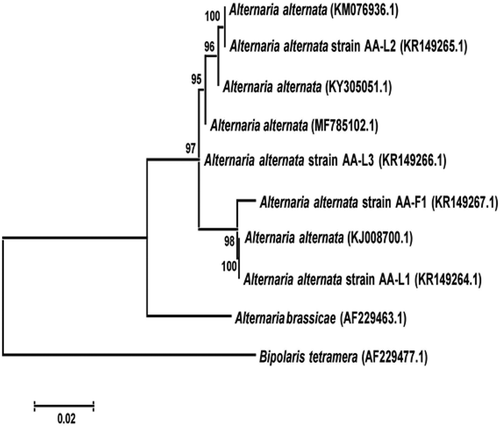Figures & data
Fig. 1 a, Symptoms of leaf blight on nursery plants. b, Leaf blight symptoms on an orchard tree. c, Healthy panicles with fruit set. d, Diseased panicles with no fruit set (panicle blight). e, Symptoms of fruit blight in the field. f, Diseased fruit.

Fig. 2 Alternaria alternata: a, Top view of colony on PDA. b, Reverse view of colony on PDA. c, Conidia in chains. d, Variation in conidia (note the surface architecture).

Fig. 3 Phylogenetic tree constructed with the ITS-5.8S rDNA sequences of the three strains of Alternaria alternata isolated from leaves of litchi (AA-L1, AA-L2, AA-L3), one strain isolated from litchi fruit (AA-F1), some other strains of A. alternata, and a strain of A. brassicae retrieved from GenBank. Bipolaris tetramera was used as the out-group taxon. The scale bar indicates the number of base changes per 1000 nucleotide positions in the neighbour-joining analysis.

